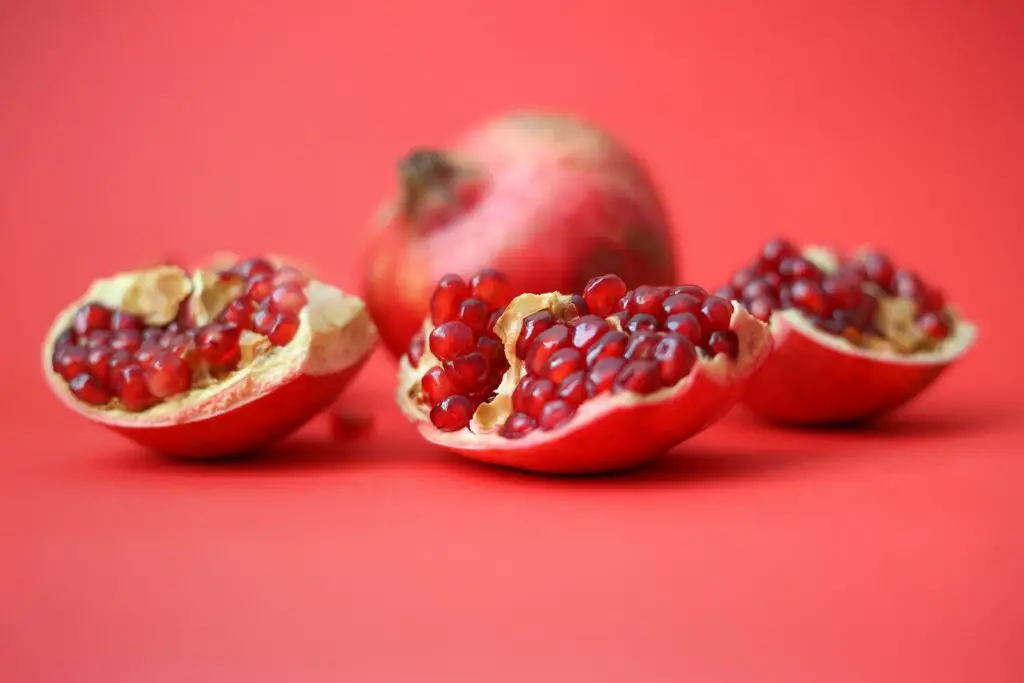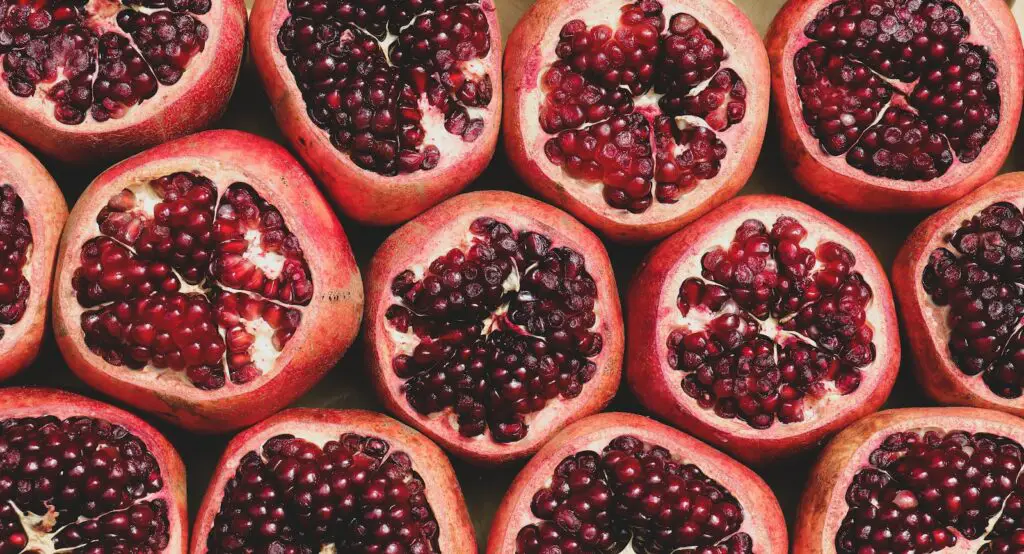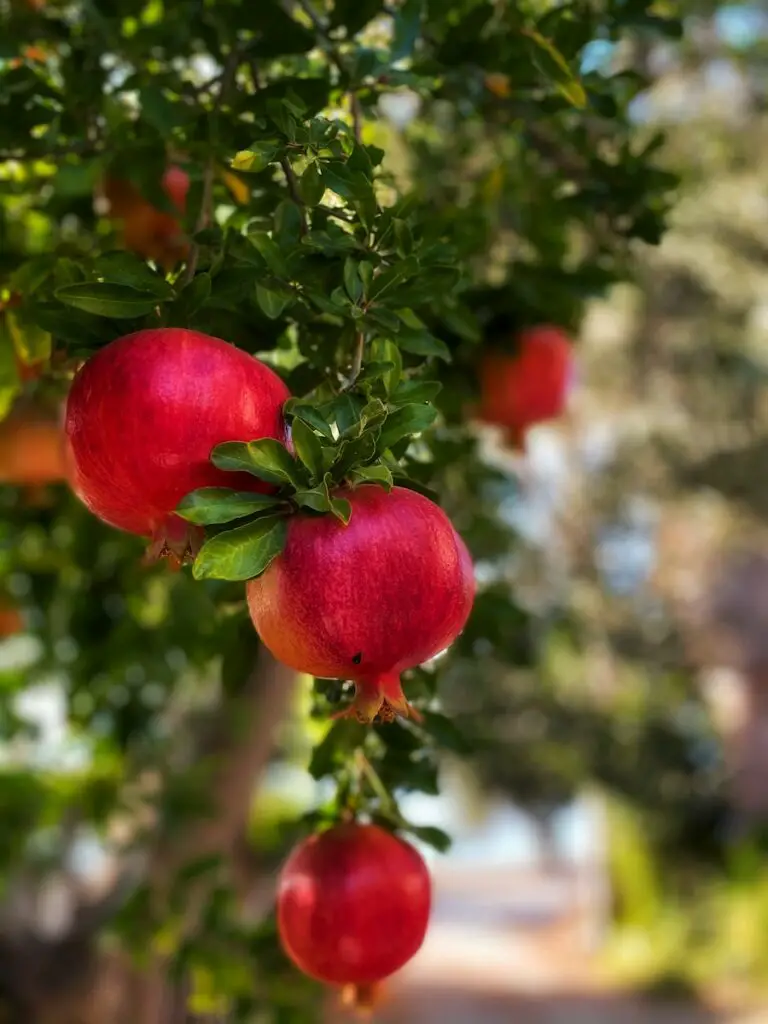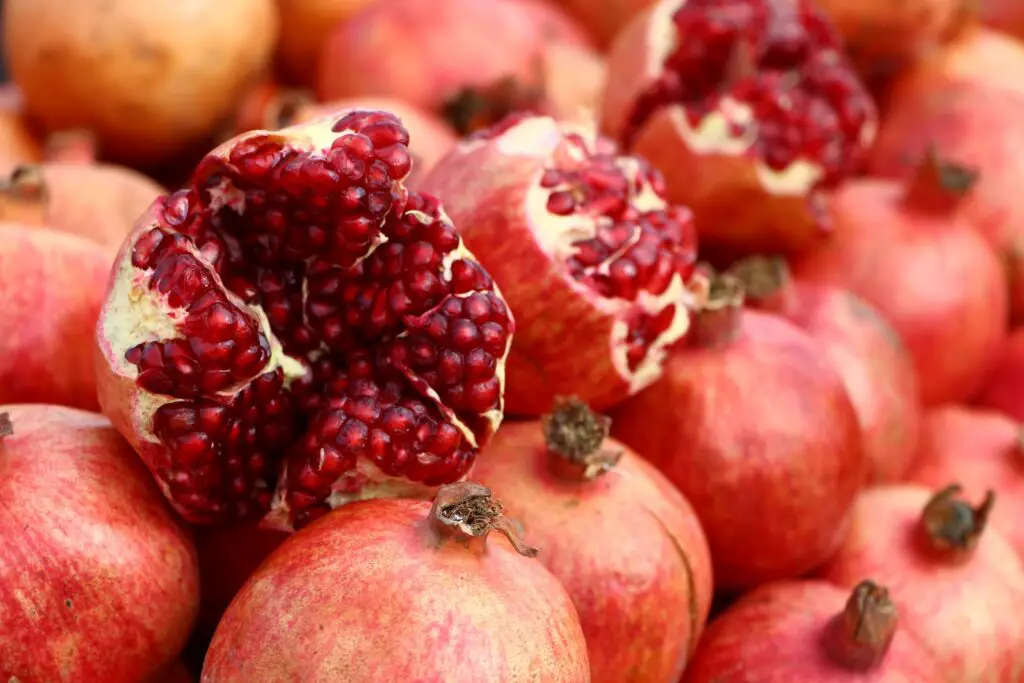
Pomegranates are a delicious and healthy fruit that are enjoyed around the world. However, like all fruits, they can go bad over time. Knowing how to tell if a pomegranate is bad can help you avoid eating spoiled fruit and potentially getting sick.
One of the easiest ways to tell if a pomegranate is bad is by examining its appearance. A fresh pomegranate should have a bright, shiny skin that is free from blemishes or bruises. If the skin is dull, discolored, or has soft spots, it may be a sign that the fruit is past its prime. Additionally, the seeds inside should be plump and juicy, not dry or shriveled.
Another way to tell if a pomegranate is bad is by smelling it. A fresh pomegranate should have a sweet, fruity aroma. If the fruit smells sour or musty, it may be spoiled. It’s important to note that some pomegranates may have a slightly fermented smell, which is normal and not a sign of spoilage. However, if the smell is strong or unpleasant, it’s best to err on the side of caution and discard the fruit.
Table of Contents
Understanding Pomegranates

Types of Pomegranates
Pomegranates come in different varieties, but the most common ones are the red and white types. The red pomegranate is the most popular and has a deep red color while the white one has a pale yellow skin. Both types have juicy and sweet arils, which are the edible seeds inside the fruit.
Nutrition and Health Benefits
Pomegranates are packed with nutrients and have numerous health benefits. They are a great source of fiber, antioxidants, and anti-inflammatory compounds. They also contain high levels of vitamin C, which helps boost the immune system. Pomegranate juice has been shown to lower blood pressure and reduce the risk of heart disease.
Uses of Pomegranates
Pomegranates can be used in a variety of ways. They can be eaten as a snack or used as a topping for salads. They can also be used in recipes for dishes such as chicken or fish. Pomegranate juice is a popular beverage and can also be used as a base for cocktails.
Storing Pomegranates
Pomegranates should be stored properly to ensure they do not go bad quickly. They can be kept at room temperature for a few days, but if you want to store them for a longer period, it is best to keep them in the fridge. Place them in a plastic bag and store them in the crisper drawer. Pomegranates can also be frozen, but it is best to remove the arils first. Avoid exposing them to direct sunlight or leaving them on the counter for too long as they can spoil quickly.
That’s it for the section on understanding pomegranates.
Identifying a Fresh Pomegranate

When it comes to buying pomegranates, it can be difficult to tell if they are fresh or not. However, there are a few things you can look for to ensure that you are getting a ripe and juicy pomegranate. Here are some tips on how to identify a fresh pomegranate.
Exterior Look
The first thing to look for is the skin of the pomegranate. A ripe and fresh pomegranate will have a bright and vibrant color. The skin should be smooth and free of any blemishes or bruises. The shape of the pomegranate should be round and plump. If the skin is wrinkled or has any soft spots, it may be an indication that the fruit is not fresh.
Touch and Feel
Another way to tell if a pomegranate is fresh is to touch and feel it. A ripe pomegranate should feel heavy for its size. When you pick it up, it should feel dense and firm. If the fruit feels light or hollow, it may not be fresh. You can also gently squeeze the pomegranate to see if it is soft or hard. A fresh pomegranate will be firm to the touch.
Sound Test
Finally, you can perform a sound test to see if the pomegranate is fresh. Hold the fruit close to your ear and tap it gently with your finger. A ripe and fresh pomegranate will produce a hollow sound. If the sound is dull or muffled, it may be an indication that the fruit is not fresh.
By using these tips, you can ensure that you are getting a ripe and fresh pomegranate. Remember to look for a bright and vibrant skin, a heavy and firm feel, and a hollow sound when tapped. With these simple tricks, you can enjoy a juicy and delicious pomegranate every time.
Spotting a Bad Pomegranate

When it comes to pomegranates, it is not always easy to tell whether they are good or bad just by looking at them. However, there are some signs that can help you determine if a pomegranate has gone bad. In this section, we will discuss the visual signs, smell and taste, and texture changes that can indicate a bad pomegranate.
Visual Signs
The visual appearance of a pomegranate can provide some clues about its freshness. A bad pomegranate may have some or all of the following visual signs:
- Brown or black spots: If you see any brown or black spots on the pomegranate, it is a sign that it has started to rot.
- Discolored skin: If the skin of the pomegranate looks discolored or has turned green, it may be a sign of spoilage.
- Soft spots: If you press the pomegranate gently and it feels soft or squishy in some areas, it is a sign of spoilage.
- Shriveled skin: If the skin of the pomegranate looks shriveled or wrinkled, it may be a sign that it is no longer fresh.
Smell and Taste
Another way to tell if a pomegranate is bad is by smelling and tasting it. A bad pomegranate may have a sour or tart smell, or it may have no smell at all. When you cut open a bad pomegranate, the seeds may have a sour or off taste. If the seeds taste mushy or squishy, they may have started to spoil.
Texture Changes
The texture of a pomegranate can also provide some clues about its freshness. A bad pomegranate may have the following texture changes:
- Soft or mushy seeds: If the seeds of the pomegranate feel soft or mushy, they may have started to spoil.
- Hard or dry seeds: If the seeds of the pomegranate feel hard or dry, it may be a sign that the fruit is no longer fresh.
In summary, to spot a bad pomegranate, look for visual signs like brown or black spots, discolored skin, soft spots, or shriveled skin. You can also smell and taste the pomegranate to check for a sour or tart smell, or mushy or squishy seeds. Finally, pay attention to the texture of the seeds, as soft or mushy seeds can indicate spoilage.
Effects of Consuming a Bad Pomegranate

Consuming a bad pomegranate can have various harmful effects on a person’s health. In this section, we will discuss some of the common effects of consuming a bad pomegranate.
Digestive Issues
Eating a bad pomegranate can cause digestive issues such as diarrhea, nausea, vomiting, and constipation. These symptoms occur because bad pomegranates can contain harmful bacteria that can cause infections in the gastrointestinal tract. In some cases, excessive consumption of bad pomegranates can lead to intestinal obstruction or blockage.
Allergic Reactions
Some people may be allergic to pomegranates, and consuming a bad pomegranate can trigger an allergic reaction. Symptoms of an allergic reaction can include hives, itching, swelling, and difficulty breathing. If a person experiences any of these symptoms after eating a pomegranate, they should seek medical attention immediately.
Food Poisoning
Eating a bad pomegranate can also cause food poisoning. Food poisoning occurs when a person consumes food that is contaminated with harmful bacteria, viruses, or parasites. Symptoms of food poisoning can include nausea, vomiting, diarrhea, and fever. In severe cases, food poisoning can lead to dehydration, organ failure, and even death.
In conclusion, it is important to check the quality of a pomegranate before consuming it. If a pomegranate looks or smells bad, it is best to discard it. Additionally, people should always wash their hands and any surfaces that come into contact with pomegranates to prevent the spread of harmful bacteria.
Safe Handling and Consumption of Pomegranates

Pomegranates are a delicious and healthy fruit that can be enjoyed in a variety of ways. However, it is important to handle and consume them safely to avoid any potential health risks. Here are some tips for safe handling and consumption of pomegranates:
- Always wash your hands before handling pomegranates to avoid the spread of bacteria.
- Rinse the pomegranate thoroughly under running water before cutting it open.
- Use a clean cutting board and knife to cut the pomegranate. Avoid using a dull knife, as this can increase the risk of injury.
- When cutting the pomegranate, be careful not to cut too deeply into the seeds, as this can release bitter juices.
- Store pomegranates in the refrigerator to keep them fresh. They can be stored for up to two months.
- If you are pregnant, it is safe to consume pomegranates in moderation. However, it is always a good idea to consult with your doctor before making any dietary changes.
- Pomegranates are a good source of fiber, which can help relieve chronic constipation. However, it is important to drink plenty of water when consuming high-fiber foods to avoid digestive issues.
- Pomegranates are also a good source of energy, thanks to their high sugar content. However, it is important to consume them in moderation, as too much sugar can lead to weight gain and other health problems.
By following these tips, you can safely enjoy the many health benefits of pomegranates.